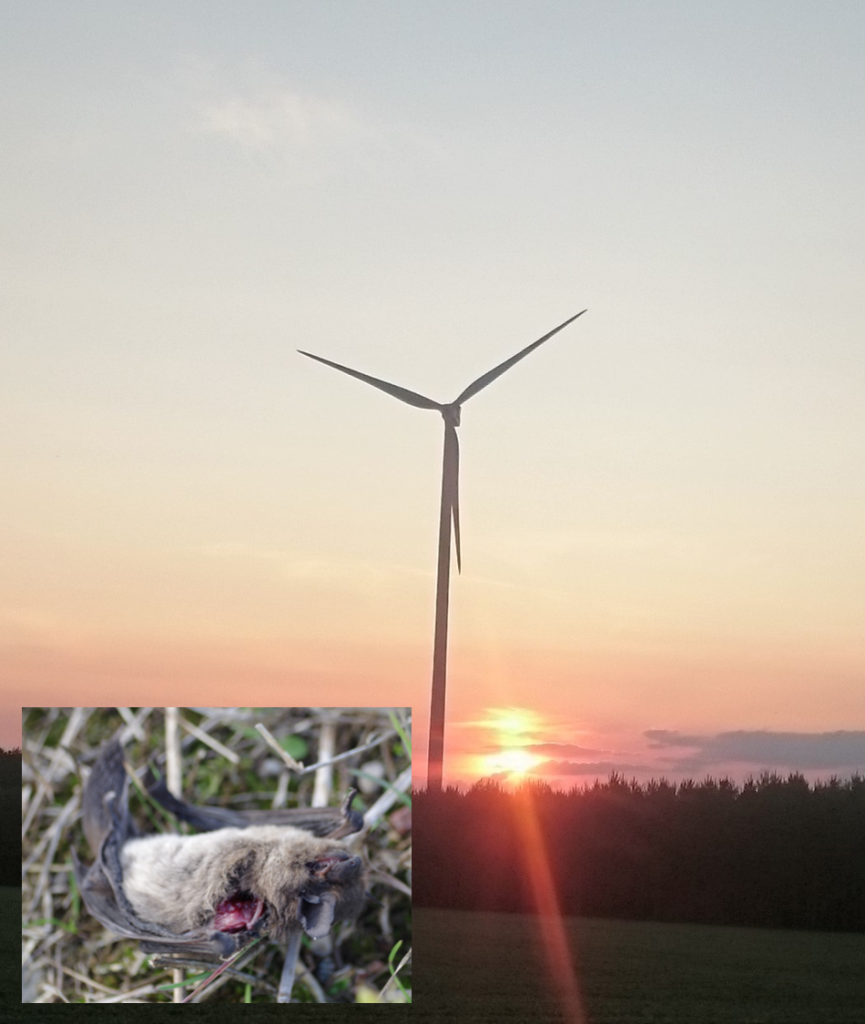Worldwide, a large number of bats are killed by wind turbines, but the specific demographic consequences of mortality from wind turbines are still unclear. In the current study, the characteristics of the Nathusius pipistrelles (Pipistrellus nathusii)killed at wind turbines were compared with those of the living local population during summer migration in Germany. Statistical modelling was used to identify the demographic groups most at risk from wind turbine mortality, including sex, age (adult or juvenile) and geographical origin (regional or long-distance pullers; represented by the ratio of stable hydrogen isotopes in the fur).
Young animals contributed a higher proportion of the number of wind turbine victims than was to be expected given their frequency in the living population. This suggests that young bats are particularly vulnerable to mortality from wind turbines. This effect varied with the density of the wind turbines. Especially at low wind turbine densities, which occur mainly in inland areas with waters and forests, where Nathusius pipistrelles (Pipistrellus nathusii) typically reproduce, young animals were found dead among the wind turbines more often than would have been expected due to their abundance in the living population. In areas with high wind turbine density, which occur mainly in coastal areas, where the Nathusius pipistrelles mainly only pass through, adults and young animals were equally endangered.
No evidence of an increased risk from wind turbines was found in either sex on the basis of the modelling. However, a higher proportion of females has been found among the carcasses, as they also have a higher proportion in the local population, most likely caused by females migrating to Germany from their northeastern breeding grounds. High mortality of females is important for this migratory bat species as it affects the annual reproduction rate of populations.
The origin of the animals (local or remote immigrants) had no influence on the probability of being killed at wind turbines.
Disproportionate mortality of juveniles at wind turbines can limit the resilience of Nathusius pipistrelle populations to environmental stressors such as climate change or habitat loss by reducing the recruitment of juveniles, which usually open up new habitats. Measures to mitigate the mortality of wind turbines, such as shutdown algorithms, should therefore be implemented throughout Europe to prevent a decline in the Nathusius pipistrelles and other migratory bats.
[frei übersetztes Abstract]

Original study:
Kruszynski C, Bailey LD, Bach L, Bach P, Fritze M, Lindecke O, Teige T, Voigt CC (2021): High vulnerability of juvenile Nathusius’ pipistrelle bats (Pipistrellus nathusii) at wind turbines. Ecol Appl. 2021 Dec 7th doi: 10.1002/eap.2513. Epub ahead of print. PMID: 34877754.
